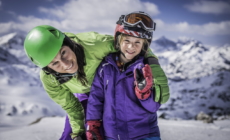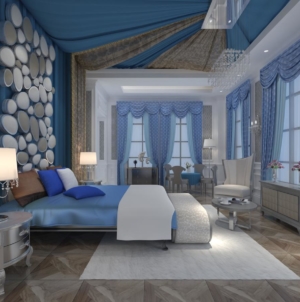-
Cool Picture Effects - September 4, 2018
-
Portrait Photography Tips That’ll Add a WOW Factor to Your Photos - September 3, 2018
-
Photography Tips for Taking Awesome Pics on Your Digital Camera - September 2, 2018
-
Fashion Photographer Salary - September 1, 2018
-
How to Set Up a Quick DIY Photo Booth in No Time - August 31, 2018
-
Do Not Miss These Tips for Shooting Stunning Black and White Photos - August 30, 2018
-
Epic Senior Picture Ideas That’ll Help You Cherish Your Memories - August 29, 2018
-
Incredibly Creative Poses for Family Photos - August 28, 2018
-
Get the Perfect Snap of Your Newborn With These Photography Ideas - August 27, 2018
-
Newborn Photography Poses That Capture the Special Moment Perfectly - August 26, 2018
Monopod Vs. Tripod: When to Use Them?

Both the tripod and monopod solve a common purpose – to avoid camera shake, resulting in sharper images at lower shutter speeds. However, there are several differences between the two based on their construction, ideal settings, convenience, and costs. PhotograFeed does a monopod vs. tripod analysis to list out differences between the two.
Selfiepod
A monopod is also used as a ‘selfiepod’ to click solo or group selfies without an obstructing arm. Some monopods are solely made for mobile phones or small point and shoot cameras for the only purpose of clicking selfies, and feature a Bluetooth-controlled shutter switch.
For professional photography, taking pictures isn’t as simple as holding a camera and clicking a button. Two factors are very crucial when doing precision photography: (i) stability, and (ii) mobility. Even a slight nudge to the camera (hand-held) can cause your picture to be shaky and blur; hence, stability is very essential when taking a good shot.
Mobility on the other hand comes handy when clicking photos of subjects in motion; the photographer needs to constantly move in order to get a good view of the subject, and then focus on it to get a clear and sharp shot. Mobility is also required when the photographer feels the need to click several shots of the same subject from different angles. He/she has to constantly maneuver around the subject looking for photogenic angles and taking multiple shots of every such angle.
The former is mostly seen when doing bird or wildlife photography; the photographer needs to depend on the cycle of nature and has very less control on this kind of a setting. On the contrary, the latter is mostly evident in modeling or human photography wherein the photographer can control a lot of variables to get some really good snaps.
Both the tripod and monopod have their pros and cons when stability and mobility come into consideration. Take a look at the differences between them and choose the one that suits your photographic needs.
Monopod
A monopod, as its name suggests, is single-legged and has a telescopic structure that enables it to quickly expand or collapse, and is also really useful in terms of portability. It has a ball-swivel mounting plate that allows panning and tilting the camera, providing much better accessibility in case of moving subjects.
Tripod
A tripod, on the other hand, is three-legged and doesn’t require human support unlike the monopod, which due to a single leg requires to be held (self-standing monopods exist too). Tripods, similar to monopods, have ball-swivel heads that are meant to couple with a camera using a threaded screw. Their legs too are composed of a telescopic structure and collapse easily, making them portable and travel-friendly. Most tripods don’t require the photographer to touch the camera; panning and tilting is done by a lever that extends from the mounting head; this introduces even more precision and control.
The former is more mobile but less stable and vice versa. Both of these are made up of light metals like aluminum or carbon fiber. The best way to decide between the two is to define your type of photography.
The former is more mobile but less stable and vice versa. Both of these are made up of light metals like aluminum or carbon fiber. The best way to decide between the two is to define your type of photography.
Monopod
So, what’s your purpose of photography? Do you want to go to the woods to shoot birds? If bird photography is your niche, the perfect companion for you is a monopod. It is compact, easy to set up, and very mobile; these three factors are very essential when the subject is very unpredictable and extremely mobile like birds or animals.
You might have rarely seen a photographer at a sports event using a tripod; they mostly use monopods to achieve more mobility and a necessary level of stability. Monopods also prove useful in crowded settings like concerts, parties, or places of tourist attraction where a tripod is out of question. They can also be used as a support pole when on a wildlife or bird photography expedition.
Tripod
If you wish to capture photos of comparatively more stationary subjects, tripod is the correct tool for you. For instance, you could use a tripod when doing portrait photography, landscape photography, night photography, or even macro photography.
Tripods work well when there is ample time to shoot, and the subject and setting are partially or totally in the photographer’s control.
Convenience
Monopod
When talking about convenience, monopod is obviously a more convenient option as it is pretty lightweight than the tripod and also very compact. Besides, it also substitutes a tripod in some cases , although not giving precise but satisfactory results. It’s anytime more comfortable to carry a monopod than a heavy tripod.
Tripod
Tripods on the other hand are very bulky and take a longer time to setup and operate. So, when it comes to portability and ease of use, the monopod wins the battle. However, these days, compact travel tripods or gorillapods are pretty useful in substituting the stability and utility of a full-sized tripod.
Again, it all depends on your personal choice for the level of mobility and stability.
Cost
Monopod
A compact 50-inch monopod from a decent company like Manfrotto costs somewhere around 30-50 dollars. If you go for advanced versions that offer features like self-standing ability, extended height, carbon fiber, twist-lock mechanism, and other stuff, the cost elevates to 100, 150, or even 200 dollars. But in all cases, they’re surely cheaper than the tripod.
Tripod
Basic tripods cost somewhere around 50-100 dollars and offer a minimum height extension capacity of 55-60 inches. More advanced ones with leveling devices, slip and flip locks, carbon fiber, ball heads, increased weight capacities, and the ability to grip any surface make them more expensive. An advanced hi-tech tripod could cost you somewhere between 500-1000 dollars.
There is no one winner in the cost battle as the purposes of both vary, costlier tripods do provide utility worth the cost. If your purpose is solved by any of the two, then the economical one would anytime be a monopod. There are tripods available for as cheap as 20 dollars, and they too solve the purpose, but they might not be from a recognized brand.
Verdict
From the above factors, it is quite clear that both are of utility in different scenarios. Although tripods are costlier, they won’t necessarily solve each and every purpose of a monopod, and vice versa. You could also consider buying a two-in-one variant that’s available in the market these days. This monopod-cum-tripod would solve the purpose of both the tools.
Once you have determined your type of photography, consider all the above factors and then buy your tool. Don’t just rely on cost or convenience. Look for a monopod or tripod that would be cheap plus provide the maximum useful features.

































